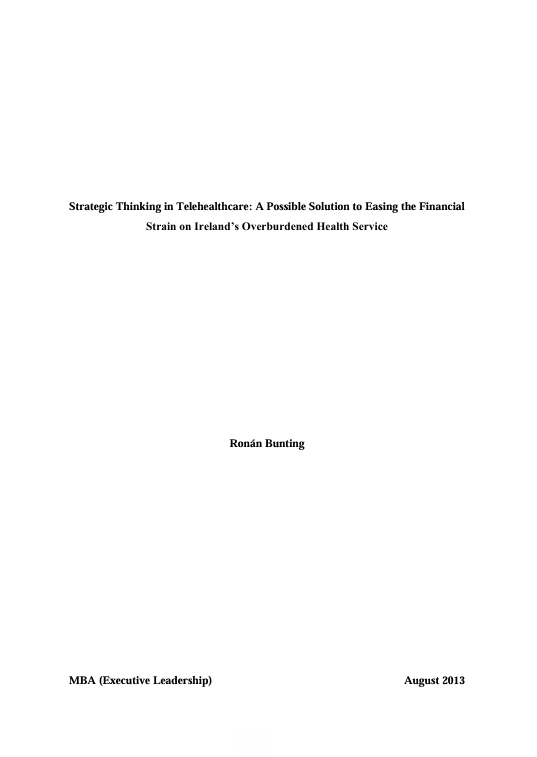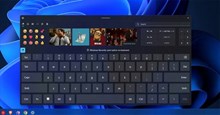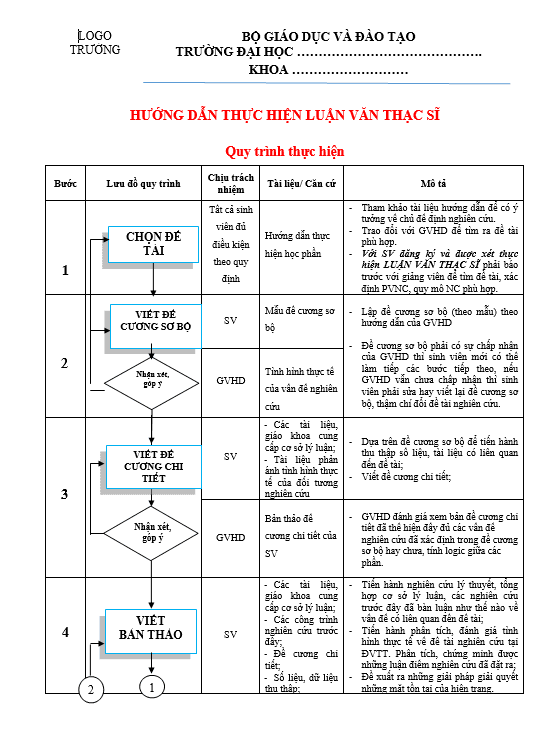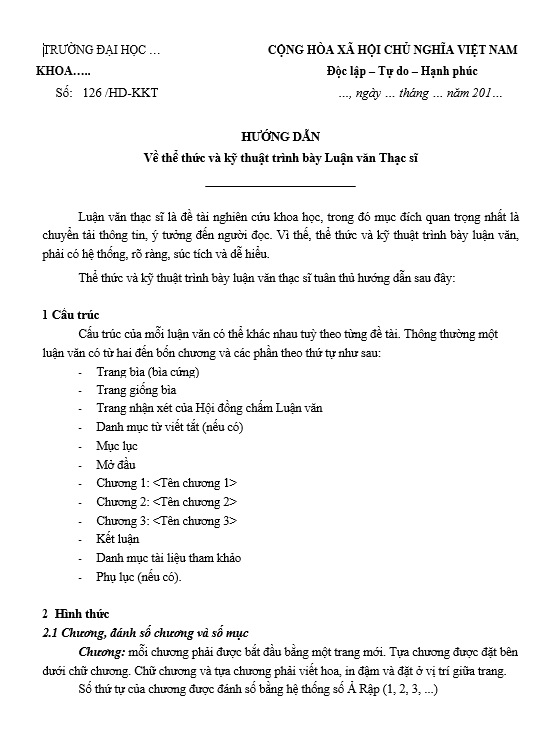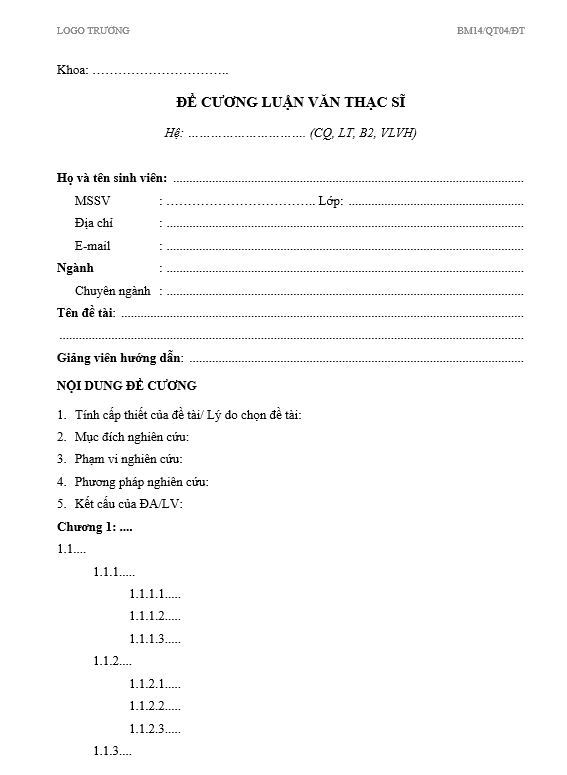Contents
List of Figures ………………………………………………………………………………………………………………….. 4
Glossary of Terms …………………………………………………………………………………………………………… 5
Chapter 1: Introduction to the study …………………………………………………………………………… 7
1.1 Research Problem …………………………………………………………………………………………………… 7
1.2 Research Proposal …………………………………………………………………………………………………… 7
1.3 Barriers to Telehealthcare ……………………………………………………………………………………… 8
1.4 Justification of the Research ………………………………………………………………………………….. 9
1.5 Research Questions ……………………………………………………………………………………………… 10
1.6 Outline of Methods ………………………………………………………………………………………………. 10
1.7 Recipients for Research ………………………………………………………………………………………. 11
1.8 Research Problem/Objective ………………………………………………………………………………. 11
Chapter 2: Literature Review ……………………………………………………………………………………. 12
2.1 Introduction ………………………………………………………………………………………………………….. 12
2.2 Strategic Management …………………………………………………………………………………………. 12
2.3 Change Management – Skills ……………………………………………………………………………… 17
2.4 Organizational Style: Importance of Clear Leadership and Management to assist in organizational change ………………………………………………………………………………….. 22
2.5 Leadership Theories …………………………………………………………………………………………….. 24
2.5.1 The Trait Approach ………………………………………………………………………………………. 24
2.5.2 The Style Approach ……………………………………………………………………………………… 25
2.5.3 The Contingency Theories …………………………………………………………………………… 26
2.5.3.1 Fiedler’s contingency approach ……………………………………………………………….. 27
2.5.3.2 Situational Leadership ………………………………………………………………………………. 27
2.5.3.3 The Path Goal Theory……………………………………………………………………………….. 28
2.6 Organizational Staff …………………………………………………………………………………………….. 29
2.6.1 Motivation …………………………………………………………………………………………………….. 29
2.6.2 Content Theories …………………………………………………………………………………………… 30
2.6.3 David McClelland ………………………………………………………………………………………… 30
2.6.4 Herzberg’s Two Factor Theory …………………………………………………………………… 31
2.6.5 McGregor’s Theory X, Theory Y ……………………………………………………………….. 32
2.6.6 Process Theories …………………………………………………………………………………………… 33
2.6.7 The Equity Theory ……………………………………………………………………………………….. 33
2.6.8 The Expectancy Theory ……………………………………………………………………………….. 34
2.7 Employee Engagement ………………………………………………………………………………………… 35
2.8 Summary ………………………………………………………………………………………………………………. 37
Chapter 3: Research Methodology ……………………………………………………………………………. 39
3.1 Background …………………………………………………………………………………………………………… 39
3.2 Research Methodology ………………………………………………………………………………………… 39
3.3 Research Philosophy ……………………………………………………………………………………………. 41
3.4 Research Approach ……………………………………………………………………………………………… 44
3.5 Research Strategy ………………………………………………………………………………………………… 44
3.6 Research Choices …………………………………………………………………………………………………. 45
3.7 Time Horizons ……………………………………………………………………………………………………… 46
3.8 Data Collection and Data Analysis …………………………………………………………………….. 46
3.9 Sample and Population ………………………………………………………………………………………… 47
3.10 Ethical Issues and Procedures …………………………………………………………………………… 48
Chapter 4: Data Findings and Analysis ……………………………………………………………………. 50
4.1 Overview ………………………………………………………………………………………………………………. 50
4.2 Qualitative Data Findings and Analysis …………………………………………………………….. 50
4.3 Quantitative Data Findings and Analysis ………………………………………………………….. 53
Q1. Gender? ……………………………………………………………………………………………………………. 53
Q2. Age Group? ……………………………………………………………………………………………………… 54
Q3. Provision of System ……………………………………………………………………………………….. 55
Q4. Duration with Telehealthcare system ……………………………………………………………. 56
Q5. Living Arrangements ……………………………………………………………………………………… 57
Q6. Telehealthcare usage ………………………………………………………………………………………. 58
Q.7 Emergency Situations …………………………………………………………………………………….. 59
Q 4.7.1 Cross tabulation- Emergency Situation’s and Living Alone ………………… 60
Q8. Emergency Service Contact …………………………………………………………………………… 61
Q9. Frequency of Contact with Emergency Services …………………………………………. 62
Q10. Peace Of Mind Obtained from Telehealthcare …………………………………………… 63
Q11. Does Telehealthcare represent good value for money ………………………………. 64
Q12. Dependency upon Alarm ……………………………………………………………………………… 66
Q13. Has Telehealthcare assisted in improving overall health? ………………………… 67
Q14. Personal Feeling of Reliability ……………………………………………………………………. 68
Q15. Confidence in Telehealthcare ………………………………………………………………………. 69
Q16. How often portable panic button is worn …………………………………………………… 70
Q17. Satisfaction with service provided through Telehealthcare ………………………. 71
Q18. Likelihood of people purchasing telehealthcare if no grants were available
…………………………………………………………………………………………………………………………………. 72
Q19. Have existing Telehealthcare users recommended the service to others? . 73
Chapter 5: Conclusion and Recommendations ………………………………………………………. 75
5.1 Conclusions ………………………………………………………………………………………………………….. 75
5.1.2 Limitations of the Research ……………………………………………………………………………… 80
5.2 Recommendations ……………………………………………………………………………………………….. 80
5.2.1 Recommendation One ………………………………………………………………………………….. 81
5.2.2 Recommendation Two: ………………………………………………………………………………… 82
5.2.3 Recommendation Three: ……………………………………………………………………………… 82
5.3 Researcher’s Concluding Statement …………………………………………………………………… 84
Chapter 6: Self Reflection …………………………………………………………………………………………… 85
6.1 Introduction ………………………………………………………………………………………………………….. 85
6.2 Learning Style ………………………………………………………………………………………………………. 86
6.3 Application of Learning ………………………………………………………………………………………. 89
6.4 Learning: Strengths and Skill Development ……………………………………………………… 91
6.5 People Management …………………………………………………………………………………………….. 91
6.6 Inter-Personal Skills …………………………………………………………………………………………….. 91
6.7 Further Learning…………………………………………………………………………………………………… 92
Bibliography ………………………………………………………………………………………………………………….. 93
Appendix 1: Quantitative Survey ……………………………………………………………………………. 111
Appendix 2: Qualitative Interview ………………………………………………………………………….. 113
Appendix 3: Interview One ………………………………………………………………………………………. 114
Appendix 4: Interview Two ………………………………………………………………………………………. 119
Appendix 5: Interview Three ……………………………………………………………………………………. 122
Appendix 6: Interview Four ……………………………………………………………………………………… 127
Appendix 7: Interview Five ………………………………………………………………………………………. 132
Appendix 8: Interview Six…………………………………………………………………………………………. 141
Appendix 9: Interview Seven ……………………………………………………………………………………. 151
Appendix 10: Further Benefits to Telehealthcare ………………………………………………… 162
Appendix 11: Confidentiality Statement ………………………………………………………………… 164

